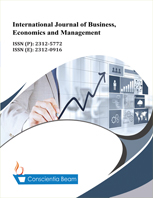Problems of Bilateral Trade Deficit between Bangladesh and India: A 2SLS Regression Analysis
DOI:
https://doi.org/10.18488/journal.62.2019.64.215.231Abstract
This study investigates the factors that determined the bilateral trade deficit of Bangladesh against India. The results of the Johansen cointegration test indicated that there were long-term associations between the trade deficit of Bangladesh real income levels, and the bilateral RER of both countries. Results from the two-stage least squares regression analyses indicated that a 1% increase in the real income levels of Bangladesh and India aggravated the bilateral trade deficit of Bangladesh by 4.61% and 3.98% respectively while a 1% real appreciation of the bilateral real exchange rate was found to reduce the deficit by almost 6%, ceteris paribus. Results also showed that Bangladesh faced persistent deficits in its bilateral trade balance against India due to its exports being comparatively less elastic than its imports engagements with India. The paper also sheds light on the anti-dumping policy pursued by India that has contributed to the unbalanced trade between the two economies.

